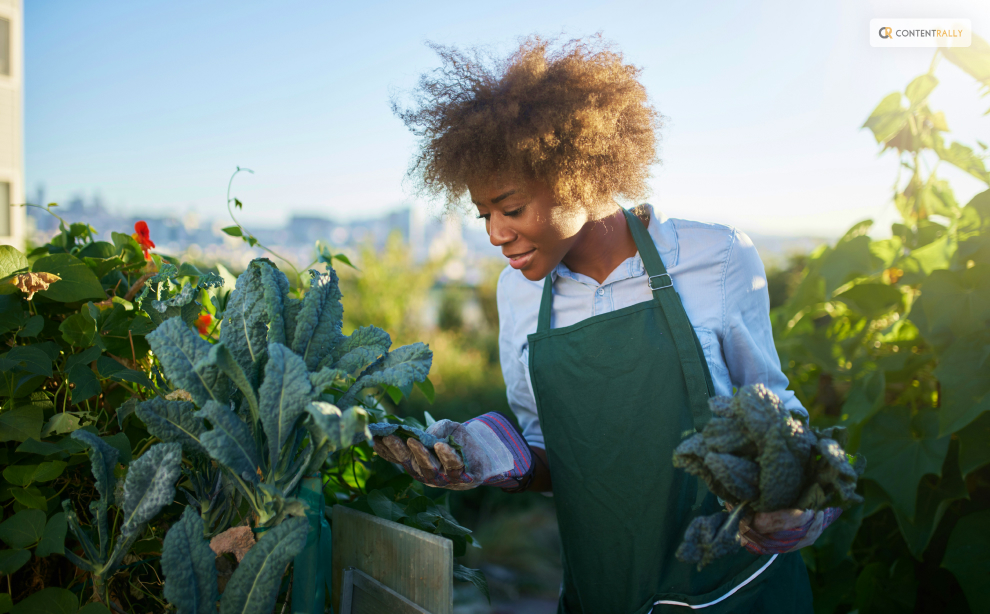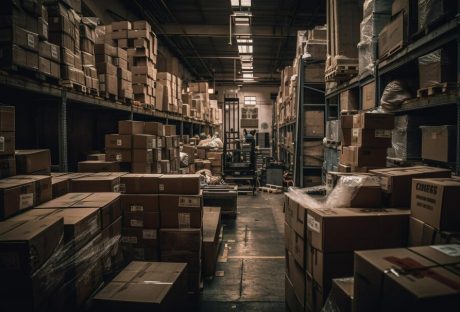Kale is one of the most nutritious and versatile greens you can grow in your garden. It’s packed with vitamins, minerals, antioxidants, and fiber and can be used in salads, soups, smoothies, and more. But how do you harvest kale throughout the year so that you can enjoy it fresh and crisp and also make it last longer?
In this article, I will show you how to harvest kale so it keeps growing, how to harvest kale from the garden, how to store and freeze kale, and the health benefits and taste of kale. Additionally, I will also share some tips and tricks on how to grow kale successfully and how to use it in delicious recipes. Whether you’re a beginner or an expert gardener, this guide will help you make the most of your kale harvest.
What is Kale & Why Should You Harvest It?

Kale has a mild, earthy, and slightly bitter taste, which can vary depending on the variety, growing conditions, and harvesting time. It can also become sweeter after a frost, as the cold temperatures trigger the plant to produce more sugars.
Kale can be eaten raw or cooked, and it can complement many dishes and flavors. It can also be seasoned with salt, pepper, lemon juice, garlic, onion, vinegar, or any other condiments you like.
Kale is not only tasty, but also healthy. It’s low in calories and high in fiber, vitamins, minerals, antioxidants, and phytochemicals. It can help improve various aspects of health, such as:
Eye health
Kale is rich in lutein and zeaxanthin. These are carotenoids that protect the eyes from age-related macular degeneration, cataracts, and glaucoma. Kale also contains vitamin A, which is essential for vision and eye health.
Blood pressure
Kale is high in potassium, magnesium, and nitrates, which are compounds that help lower blood pressure and relax the blood vessels. Kale also contains vitamin C, which helps prevent homocysteine, an amino acid that can damage the blood vessels and increase the risk of cardiovascular diseases.
Bone health
Kale is a good source of calcium, magnesium, and vitamin K, which are important for bone health and density. Kale also contains vitamin C, which helps the body absorb calcium and produce collagen, a protein that strengthens the bones and connective tissues.
Immune system
Kale is loaded with vitamin C, which is a powerful antioxidant that boosts the immune system and fights off infections and inflammation. Kale also contains vitamin E, which enhances the immune response and protects the cells from oxidative stress.
Digestion
Kale is high in fiber, which helps regulate digestion and prevent constipation, diarrhea, and bloating. Fiber also feeds the beneficial bacteria in the gut, which improve the digestion and absorption of nutrients and support the immune system.
Skin and hair
Kale is rich in vitamins A, C, E, and iron, essential for healthy skin and hair. Vitamin A helps maintain the moisture and elasticity of the skin and prevents acne and wrinkles. Vitamin C helps produce collagen, which keeps the skin firm and smooth.
On the other hand, vitamin E helps protect the skin from sun damage and aging. Iron helps deliver oxygen to the skin and hair cells and prevents anemia, which can cause hair loss and pale skin.
How to Harvest Kale So It Keeps Growing?

One of the best things about kale is that it’s a cut-and-come-again crop. This means that you can harvest it multiple times throughout the season, as long as you do it correctly. Here are the steps to follow to harvest kale so it keeps growing:
Choose the right time to harvest
The best time to harvest kale is when the leaves are young and tender, usually about 30 to 40 days after planting. You can also harvest baby kale leaves about 15 to 25 days after planting.
You should harvest kale before it starts to flower. This is when it produces yellow or white blossoms and becomes bitter and tough.
Kale usually flowers when the days get longer and warmer. Therefore, you should harvest it more frequently in the spring and summer.
Use a sharp knife or scissors to cut the leaves
You can either cut the whole plant at the base, leaving about an inch of stem or cut individual leaves from the lower part of the plant, leaving the upper leaves to grow.
Additionally, you should cut the leaves about an inch above the soil to avoid damaging the crown and the roots. You should also avoid cutting too many leaves from one plant. This is because this will weaken the plant and reduce the yield. A good rule of thumb is to leave at least half of the leaves on each plant.
Wash and dry the leaves
You should wash the kale leaves as soon as possible after harvesting to remove any dirt, bugs, or pesticides. To rinse the leaves under cold water, you can use a colander or a salad spinner. After that, pat them dry with a paper towel or a cloth. You should also remove any damaged or yellow leaves, and trim any tough stems.
Enjoy or store the leaves
You can eat the kale leaves fresh, or store them in the refrigerator or freezer for later use. I will explain how to store and freeze kale in the next sections.
How to Harvest Kale from the Garden?

If you want to harvest kale from the garden, you need to follow some simple steps and tips to ensure a successful and bountiful harvest. Here are some things to consider when harvesting kale from the garden:
Choose the right variety
There are many varieties of kale to choose from, depending on your preference and climate. Some of the most common varieties are curly kale, which has dark green, and curly leaves that are great for salads and chips.
You can also try dinosaur kale, which has dark blue-green, flat leaves that are great for soups and stir-fries, and red Russian kale, which has purple-red, frilly leaves that are great for salads and smoothies.
You can also choose kale varieties based on their maturity time, cold tolerance, flavor, and color. Some popular kale varieties are Winterbor, Redbor, Lacinato, and Scarlet.
Plant the seeds or seedlings
Depending on your preference and availability, you can plant kale seeds or seedlings in the garden. The best time to plant kale seeds or seedlings is in early spring, as soon as the soil can be worked, or in late summer or early fall, for a winter harvest. You can also plant kale seeds or seedlings every two to three weeks, for a continuous harvest.
You should plant the seeds or seedlings about a quarter to half an inch deep, and one to two inches apart, in rows that are 18 to 24 inches apart. Additionally, you should water the seeds or seedlings well, and keep the soil moist until they germinate or establish, which usually takes seven to 14 days.
Thin the seedlings
When the kale seedlings have two to four true leaves, you should thin them to avoid overcrowding and competition. You should leave about six to 12 inches of space between each plant and eat or transplant the thinned seedlings. You should also weed the area around the kale plants regularly, to prevent pests and diseases.
Harvest the leaves
You can start harvesting kale leaves when they are big enough to eat, usually about 30 to 40 days (about one and a half months) after planting, depending on the variety. You can either harvest the whole plant or pick individual leaves from the lower part of the plant, leaving the upper leaves to grow.
That is not all. You should harvest kale in the morning when the leaves are crisp and fresh and before the sun gets too hot. You should also harvest kale before it starts to flower, which is when it produces yellow or white blossoms and becomes bitter and tough.
How to Store and Freeze Kale

Kale is best eaten fresh, as it loses its flavor and texture quickly. However, if you have a large harvest, or you want to preserve kale for later use, you can store or freeze it. Here are the best ways to store and freeze kale:
- Store kale in the refrigerator: You can store fresh kale in the refrigerator for up to a week, if you keep it in a perforated plastic bag or a container with a lid. You should also avoid washing the kale before storing it, as this will make it wilt faster. You should wash the kale just before using it.
- Freeze kale raw: You can freeze raw kale without blanching it, which is a process of briefly cooking and cooling the vegetables to stop the enzyme activity that causes them to spoil. However, freezing raw kale will result in a mushy and watery texture and a loss of flavor and nutrients. To freeze raw kale, you should wash and dry the leaves, and then pack them in freezer bags or containers, leaving some space for expansion. You can freeze raw kale for up to six months, and use it in smoothies, soups, or casseroles.
- Freeze kale blanched: You can freeze blanched kale, which will retain its color, texture, flavor, and nutrients better than raw kale. To freeze blanched kale, you should wash and trim the leaves, and then blanch them in boiling water for two to three minutes, depending on the size of the leaves. You should then drain and cool the leaves and squeeze out the excess water. Moreover, you can then pack the leaves in freezer bags or containers, leaving some space for expansion. You can freeze blanched kale for up to a year, and use it in salads, sandwiches, or quiches.
How to Use Kale in Different Cuisines and Recipes

Kale is a versatile vegetable that can be used in many different cuisines and recipes. Whether you want to make a salad, a soup, a smoothie, or a casserole, kale can add flavor, color, and nutrition to your dish. Here are some examples of how to use kale in different cuisines and recipes:
American cuisine
Kale is a popular ingredient in American cuisine, especially in salads, sandwiches, and casseroles. You can make a kale and apple salad with walnuts and honey mustard dressing, or a kale and chicken sandwich with mayonnaise and cheese.
You can also make a kale and cheese casserole with eggs, milk, and bread crumbs, or a kale and sausage quiche with pie crust and cheddar cheese.
Mediterranean cuisine
Kale is a common ingredient in Mediterranean cuisine, especially in Greek, Italian, and Spanish dishes. You can make a kale and feta cheese pie with phyllo dough and olive oil, or a kale and white bean soup with garlic, rosemary, and lemon juice. You can also make kale and tomato pasta with parmesan cheese and basil, or a kale and potato tortilla with eggs, onion, and paprika.
Asian cuisine
Kale is widely used in Asian cuisine, especially in Chinese, Japanese, and Indian dishes. You can make a kale and tofu stir-fry with ginger, soy sauce, and sesame oil.
Additionally, you can make a kale and seaweed salad with rice vinegar, sugar, and sesame seeds. You can also make kale and coconut curry with onion, garlic, curry paste, and coconut milk. If you like something Indian, you can also try kale and lentil dal with cumin, turmeric, and coriander.
Wrapping It Up!
Kale is a wonderful vegetable that you can harvest, store, and use in various ways. It’s easy to grow, harvest, and store kale, as long as you follow some simple steps and tips. It’s also healthy, delicious, and versatile, as you can use it in many different cuisines and recipes. Kale is a green treasure that you don’t want to miss.
If you want to know how to harvest kale, I hope that this blog has been of help to you. If there are any other queries related to the same, please feel free to let me know. All that you need to do is scroll down till you reach the bottom of the page. Then leave your comments and suggestions in the box below. And I will be there to help you out with the same!
Read Also:























All Comments
Купить бетон
It was a real pleasure to read. You're doing great. Good article.